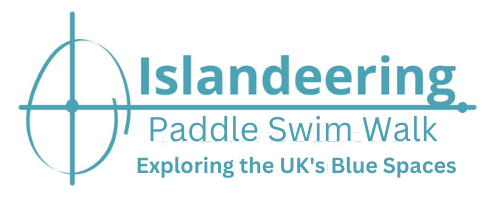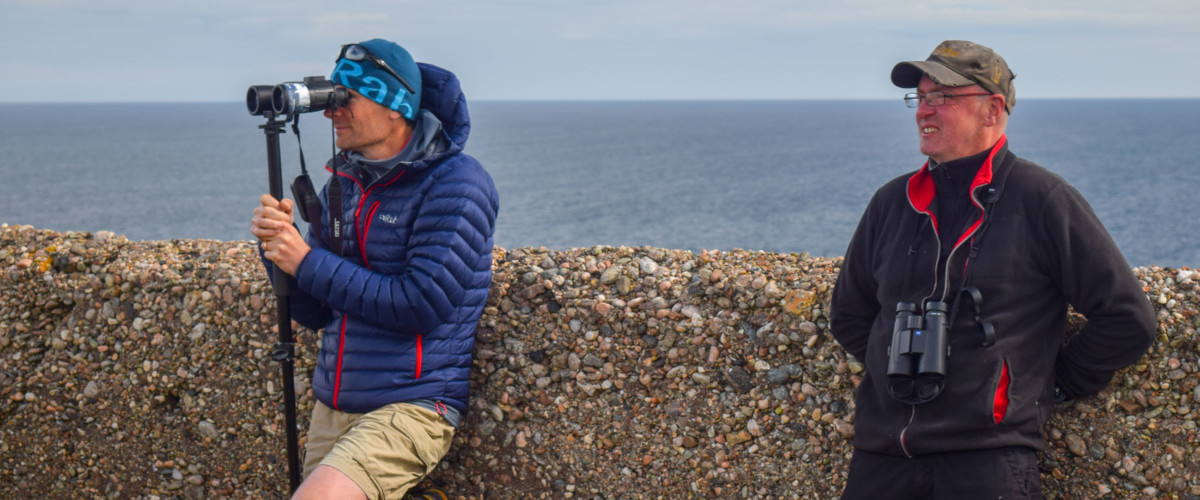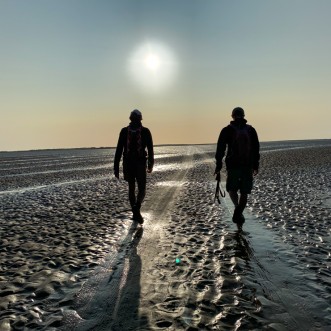What better way to spot whales, dolphins, killer whales (orcas) and basking sharks than onboard a boat destined for an island of the British Isles or from an island shore itself. With over sixteen species to see, here are some of our favourite archipelagos and islands where we have encountered plenty of these magnificent beasts on our travels
- Isles of Scilly
I don’t think that I’ve ever completed a trip on the Scillonian III and spent more than a few moments of the crossing inside the cabin – even in bad weather. My standard trip is to wait until Wolf Rock, nip to the café for a fresh cup of coffee, return to the deck and then wait. It’s not usually long before the sleek bodies of common dolphins can be seen surfing the bow wave below, making a great start to any holiday.
Get there: Scillonian III sails once a day between Penzance and St Mary’s, Scilly
Stay: laidback Mincarlo on St Mary’s
Closest islandeering route: St Mary’s, Tresco, St Martin’s, St Agnes and Samson, Bryher and Gugh all have circular coastal paths
- Ynys Lochtyn, Cardigan Bay
A short, steep scramble down a climber’s path from the mainland, through a sea cave and onto the westerly point of this island affords expansive views of the bay and the resident population of bottlenose dolphins. It took some time to find this route but it was well worth it. As wildlife tour boats scour the sea in the far distance looking for the largest pod in Europe, we heard the distinctive blow of dolphins right below us almost at the foot of the cliffs. The tour boats hadn’t spotted them and we had them to ourselves that day.
Get there: about half way between Aberaeron and Cardigan on the A487 turn off onto the B4334 to Llangrannog and follow the Ceredigion Coast Path north.
Stay: Pentre Arms, LLangrannog, friendly inn B&B, great food, great location
Closest islandeering route: Ynys Lochtyn
- Isle of Man
Almost at the end of our 144 km road cycling trip to explore a coastal circuit of the island I had my first ever sighting of Risso’s dolphins. Just south of Douglas Head along a quiet track at the edge of the cliffs a mother and calf were swimming gently below. The bulbous shape of the almost white head initially confused my identification, but after watching them for thirty minutes or so I was in no doubt. The coastal waters of the island are rich in marine life and there are many more places to stop around the coast to spot other species. Kallow Point in Port St Mary near the southern tip is a real hotspot for harbour porpoise; minke whales can often be seen around Laxey and Bulgham Bays in the winter; bottlenose dolphin can be seen all along the east coast; and common dolphin grace the whole coastal circuit.
Get there: Isle of Man Steam Packet Company offers regular sailings between Douglas and Heysham, Birkenhead, Liverpool, Dublin and Belfast.
Stay: There is a full range of traditional accommodation, along with plenty of unusual places to stay. Try Saba’s Glen wooden yurt in tranquil setting 5 mins drive from Douglas; or Knockaloe Beg Farm Wigwams near Peel.
Closest islandeering route: a 144 km road cycling circumnavigation of the whole island; or the 160 km hike coastal path, known as the Raad Ny Foillan around the Isle of Man.
- Black Isle, Ross & Cromarty
Not really an island but this article wouldn’t be complete without mentioning the best site in the British Isles for watching bottlenose dolphins from land and the chance of learning more about them with Charlie Phillips, WDC’s Adopt a Dolphin Field Officer. The first time I met him was by chance very early one the morning on Chanonry Point. I was trying to photograph the dolphins when a voice behind me told me that I’d never get a decent shot – I was pointing the camera into the sun. I didn’t know who Charlie was at the time and it wasn’t until I’d got back to the carpark, saw the huge letters of WDC on the back of his jacket and looked the organisation up that I realised who he was and how special that thirty minutes with him had been. It started my journey with this incredible organisation.
Get there: Drive north of Inverness on A9; turn right onto B9161 to Munlochy; then right onto A832 to Fortrose; just after Fortrose police station turn right and continue past Fortrose and Rosemarkie Golf Course to arrive at small car park beside the old lighthouse. Or take Bus 26A or 26C operated by Stagecoach Highlands also runs from Inverness Bus Station.
Stay: For quirky and excellent try The Anderson; also watch dolphins from the Fortrose Bay Campsite.
- Tiumpan Head, Isle of Lewis
After circumnavigating several islands of the Outer Hebrides we spent our last evening on Tiumpan Head and couldn’t have timed our arrival there more perfectly. One of the WDC Shorewatch volunteers was up on the vantage point with a pair of binoculars looking across the vast expanse of water between us and mainland and the northern tip of Lewis. In just an hour he pointed out several white-beaked dolphins and minke whales. He was really on the lookout for humpback whales but unfortunately they didn’t put in a show that night. At other times you’ll likely see Risso’s, bottlenose and common dolphins, harbour porpoise and if you’re lucky an orca or two. Sperm whales have been rarely spotted here too. This is widely considered one of the best places in the UK, and possibly Europe, for whale-watching from land and is a must-visit destination for anyone visiting the Outer Hebrides in search of wildlife.
Get there: CalMac runs a ferry service from Ullapool to Stornoway; alternatively there is a ferry from Uig on Skye to Tarbert, Isle of Harris (about 40 miles away and drive north). Once there drive west from Stornaway on the A866 and follow it until the lighthouse at the end of the road. Bus from Stornoway to Portvoller W5.
Stay: Royal Hotel, Stornaway
Closest islandeering route: Great Bernera, Taransay and Scalpay all have circular coastal paths
- South Walls, Orkney
Joined to Hoy in Orkney, South Walls is blessed with an incredible south shore with soaring cliffs, gloups, sea arches and other remarkable geological features. The lofty Cantick Head is a fabulous place to look out for pilot and minke whales, killer whales and basking sharks. The ferry trip across the swirling waters of the Pentland Firth from Gills Bay to St Margaret’s Hope is also a good way to spot these species along with the plentiful seabird life including puffins, and gannets.
Get there: Orkney Ferries between Houton (Mainland) and Longhope (South Walls), many of these go via Lyness (Hoy) or Flotta.
Stay: Stromabank Hotel, Longhope; food is also very good at the Royal Hotel (no accommodation)
Closest islandeering route: South Walls and Flotta have coastal paths
- Mainland and Yell, Shetland
Shetland is a wildlife lover’s paradise. The southern tip of mainland at Sumburgh Head, on top of the dramatic cliffs, is a wonderful place to watch for passing minke whales, killer whales and dolphins as well as experience one of Britain’s most accessible seabird colonies – a true spectacle of thousands of seabirds including puffins, fulmars, guillemots and shags. Orcas may also be spotted on the ferries across Bluemull Sound between Unst and Yell and in Yell Sound between Mainland and Yell.
Get there: Northlink Ferries depart seven nights a week between Aberdeen-Lerwick. Regular ferries operate between Mainland, Unst and Yell
Stay: Aald Harbour B&B, Lerwick
Happy watching everyone and let us know what you spot!


